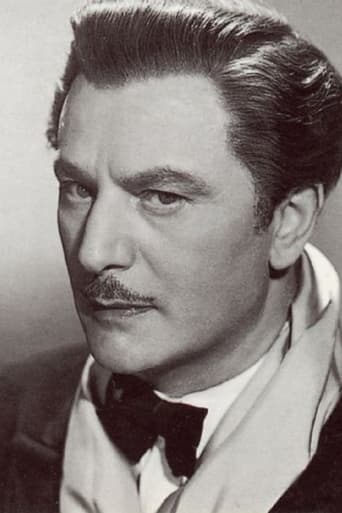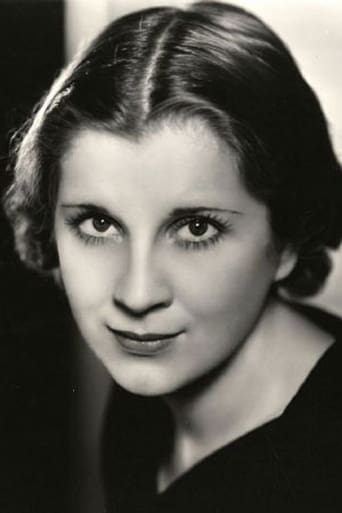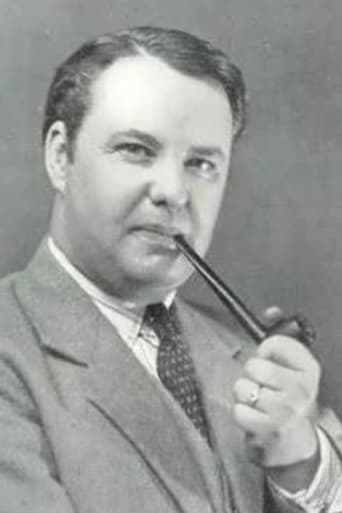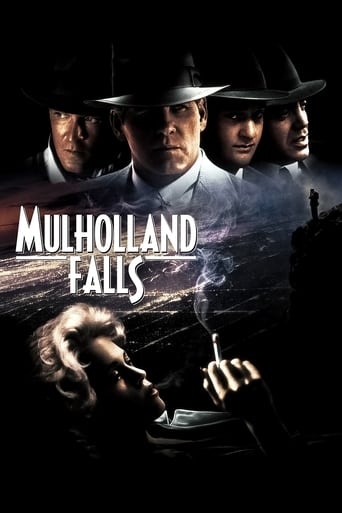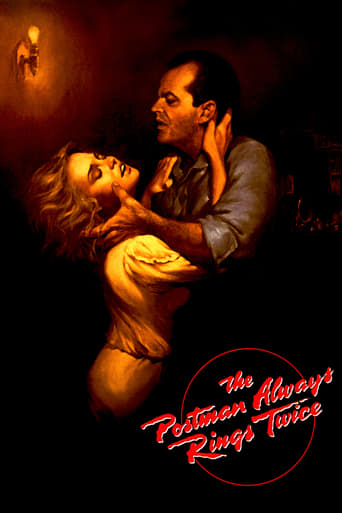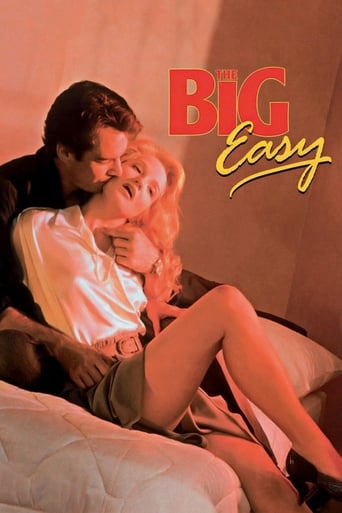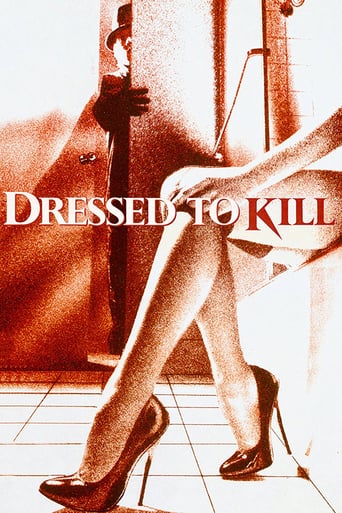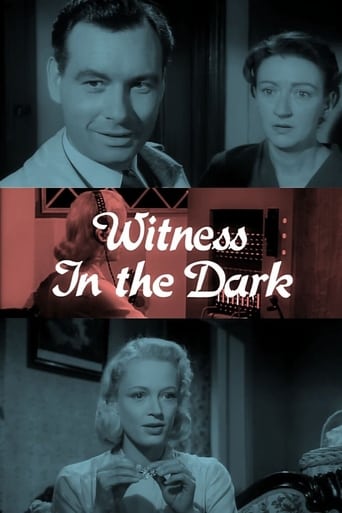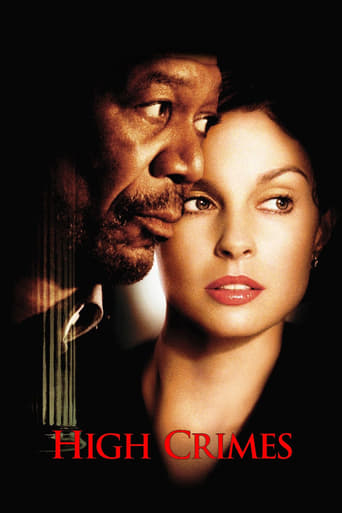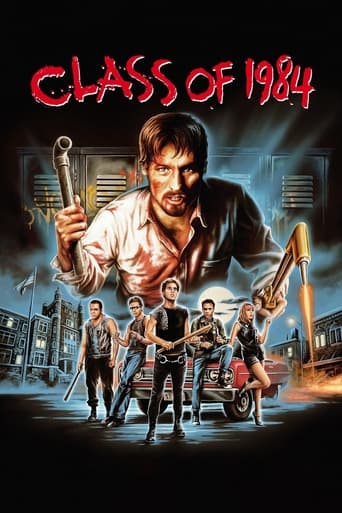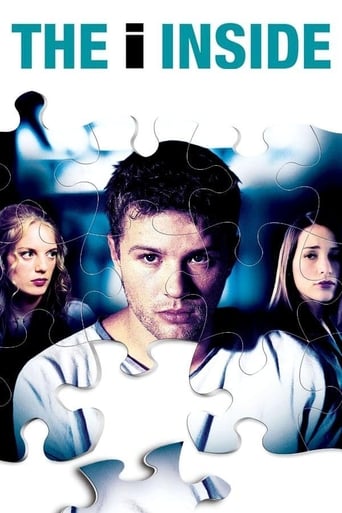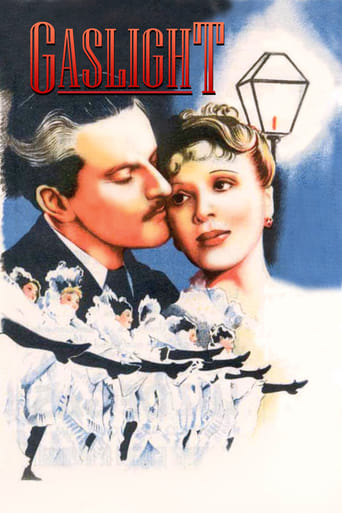

Gaslight (1940)
Twenty years removed from Alice Barlow's murder by a thief looking for her jewels, newlyweds Paul and Bella Mallen move into the very house where the crime was committed. Retired detective B.G. Rough, who worked on the Barlow case, is still in the area and grows suspicious of Paul, who he feels bears a striking resemblance to one of Barlow's relatives. Rough must find the truth before the killer can strike again and reclaim his bounty.
Watch Trailer
Cast


Similar titles
Reviews
In Victorian London, an old woman is murdered at a house in Plimco Square and her house is ransacked, some very valuable rubies being reported missing afterward. The house is not occupied again until years later, by a man and his wife and two woman servants. But the supposedly religious husband is controlling of his wife and suggests she is mentally ill, deliberately moving objects in their home and suggesting she has been moving them in a fit of madness. He also flirts with the younger servant. Rough, a former policeman now working as a groom in the area, is suspicious and gets involved in their lives. What exactly is going on? The gaslight in question refers to suspicious dimming of the house's gas room lights at certain times to suggest goings-on at the house. Though the plot is predictable, the ending makes up for it-not because of its being a surprise but the way it is told, and how the characters handle matters when the truth is revealed.
I did see the MGM remake years ago, but so much time has passed since I saw it that I have forgotten what it was like. I suspect that this original version is a lot better. For one thing, it runs at a lean 84 minutes while the MGM remake runs about a half hour longer. There is no padding - every scene serves a purpose. The story telling here keeps you interested even though viewers who have not heard what the movie is about before sitting down to watch it may be a bit confused at first as to just what is going on. (To those viewers, don't worry - everything becomes clear eventually.) The movie is well directed, with production values that stand up to major Hollywood studio movies of the time, and with a great deal of tension throughout. A lot of this tension has to be credited to actor Anton Walbrook - he is incredibly cold and heartless as the lead, and you'll find him simultaneously creepy and hateful... and hope he'll get what's coming to him. By the way, though the movie contains some themes mature for the time, by today's standards it's quite safe for kids, so it may be a good choice if you want to introduce classic cinema to your children - they won't be bored.
This original, British version of "Gaslight" was released in 1940, four years before the Hollywood remake. The films tell basically the same story though this version is supposedly closer to the original stage play. It also clocks in at about half an hour less than the later version.In the film, a husband and wife move into a house that had been vacant since a murder took place there years before. Soon the wife begins to show signs of losing her sanity or at least that's what her husband would have her believe. He is attempting to protect a secret from his past but, little does he know, a retired policeman is already on his trail.The cast is pretty good but Anton Walbrook, Diana Wynyard & Cathleen Cordell just can't compare to their counterparts in the Hollywood remake. That being said, they are all perfectly acceptable and give performances that are different enough to keep them interesting. Frank Pettingell, meanwhile, outclasses Joseph Cotten in my opinion and the rest of the supporting cast is satisfactory.The direction of Thorold Dickinson is decent but, again, it pales in comparison to George Cukor's interpretation. I also found that the editing was lacklustre and I wonder if any scenes had to be cut for one reason or another. As it is, the story could use some fleshing out but otherwise the script gets the job done. The score, meanwhile, may be the only area of the production that exceeds the later version.Ultimately, if you want to see a film adaptation of Patrick Hamilton's "Gaslight" then the 1944 version is the one I'd recommend. However, the original 1940 adaptation is still a decent effort and worth a look if you are so inclined.
This is the first film adaptation of the British stage drama "Angel Street," and in many instances it betters it's famous Hollywood counterpart. Diana Wynyard, Frank Pettingell, and Cathleen Cordell don't have the acting chops of Ingrid Bergman, Joseph Cotten, and Angela Lansbury, but Anton Walbrook's performance as the sinister Paul Mallen blows away Charles Boyer as Gregory Anton. Where Boyer comes across as an obsessed schemer trying to find the missing rubies of Alice Alquist, Walbrook is quite mad, always walking on the edge of the abyss. It's basically the same role he would play nine years later in the fine supernatural thriller "Queen of Spades," also directed by Thorold Dickinson with a surer hand. Whenever Walbrook is on screen he is fascinating to watch, and commands our attention in the way Peter Lorre often did.There are no scenes in the 1944 Hollywood remake as suspenseful as the opening of the 1940 version where an unknown assailant strangles Alice Barlow then savagely knifes the chair cushions in his search for - what? Or even at the end where Mallen's wife grips a knife with which she seems about to stab her husband. In the middle of the film, however, we must sit through some rather stiff direction and mechanical plot devices. Still MGM thought enough of this version to purchase and suppress it in advance of their own production.Unlike the slick Hollywood version that provides a gratuitous romantic interlude to showcase Boyer's and Bergman's sex-appeal, the British film doesn't need to explain why the abused wife found her husband appealing in the first place. It focuses rather on the story's Victorian milieu, in which husbands are tyrants who treat their wives as possessions like the gaudy furnishings that clutter their rooms.The one change in the Hollywood version that makes sense is the inclusion of Joseph Cotten as a romantic hero. It seems necessary if only to give him a plausible reason for taking a personal interest in Bergman's plight.


